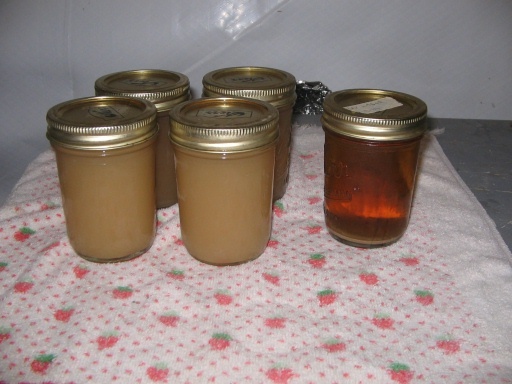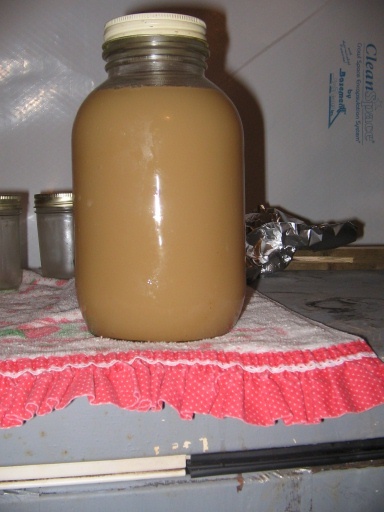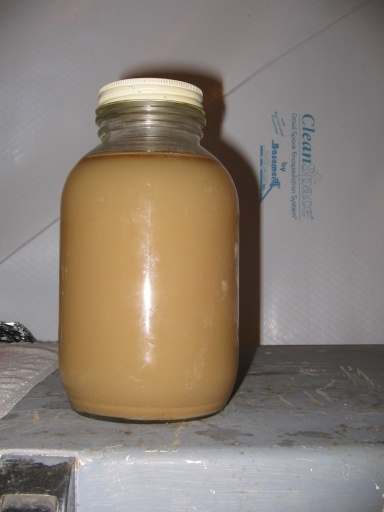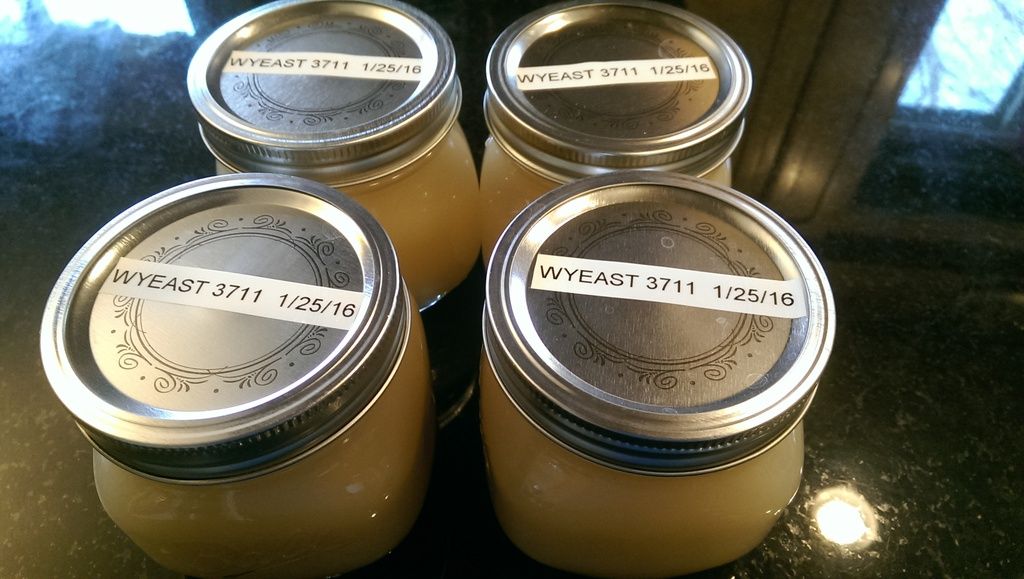Then, trying not to disturb the stuff at the bottom, fill up the larger jar that you boiled. If some of the stuff from the bottom gets in, it's not the end of the world.
Let this jar settle for 20 minutes or so, too. You'll notice some more stuff settling to the bottom again.
Then, again being careful not to disturb the stuff on the bottom, fill up the small Mason jars. Fill them all the way up.
The four on the left are the ones I did today. the one on the right is one that I did last February. It's just there to show the final product.
All that's left to do is label the jars and put them in the fridge. Then when it's time to make a starter, you just pull one out, let it warm to room temp, and decant most of the liquid out of the jar, give the rest a good shake, and pitch it into your starter..
Hope this helps. Good luck.








